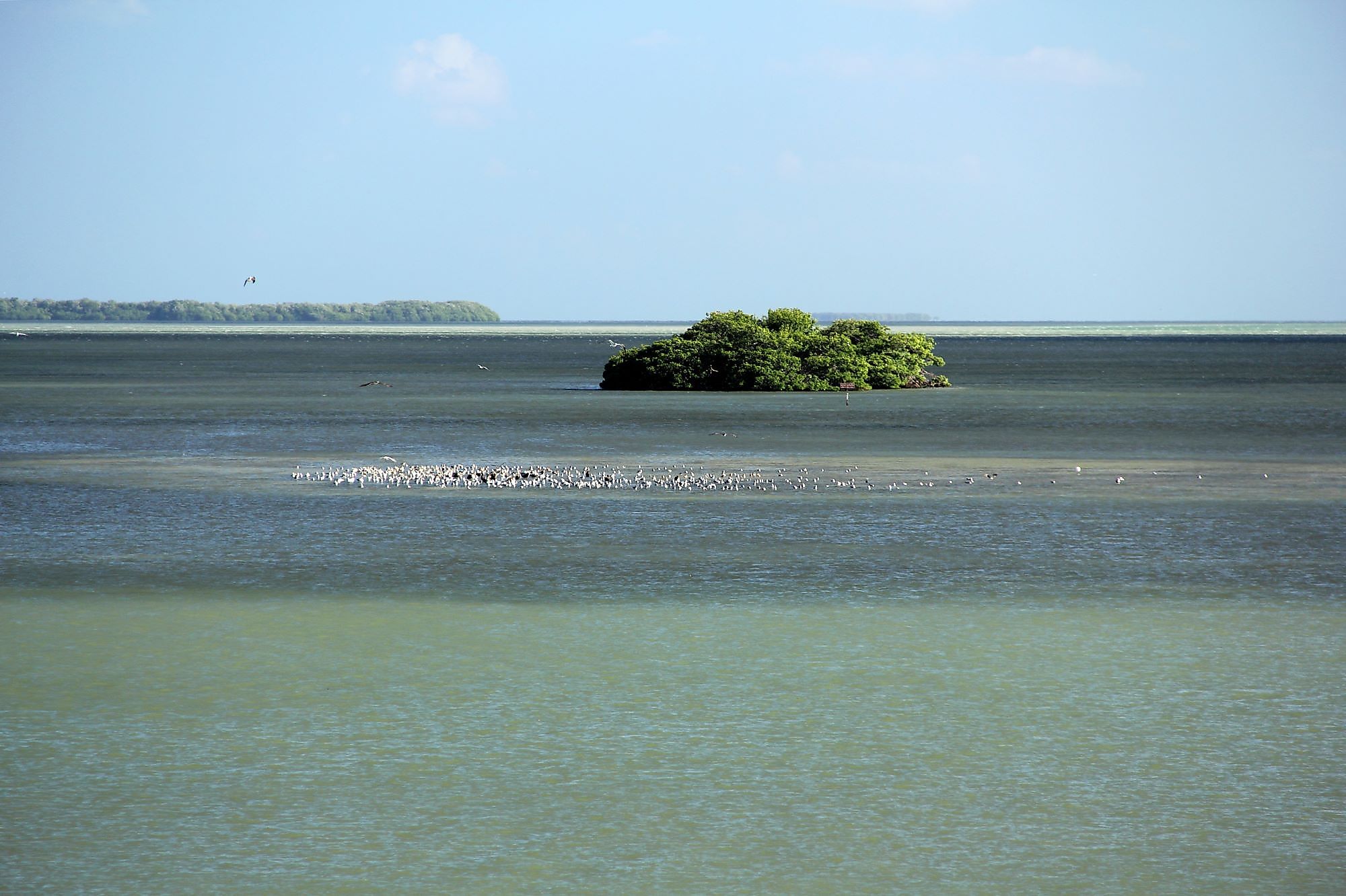
Florida Bay
Florida Bay is a vast shallow lagoon located between the southernmost point of mainland Florida and the Florida Keys, a chain of small islands. The Bay is noteworthy for its seagrass ecosystem and the animals that dwell in it. Everglades National Park encompasses nearly all of Florida Bay. The Florida Keys National Marine Sanctuary runs along the southern end of the bay. The northern half of the Keys are located beyond the Bay, and so is the Florida Reef, North America's sole barrier coral reef.
Why is Florida Bay Important?
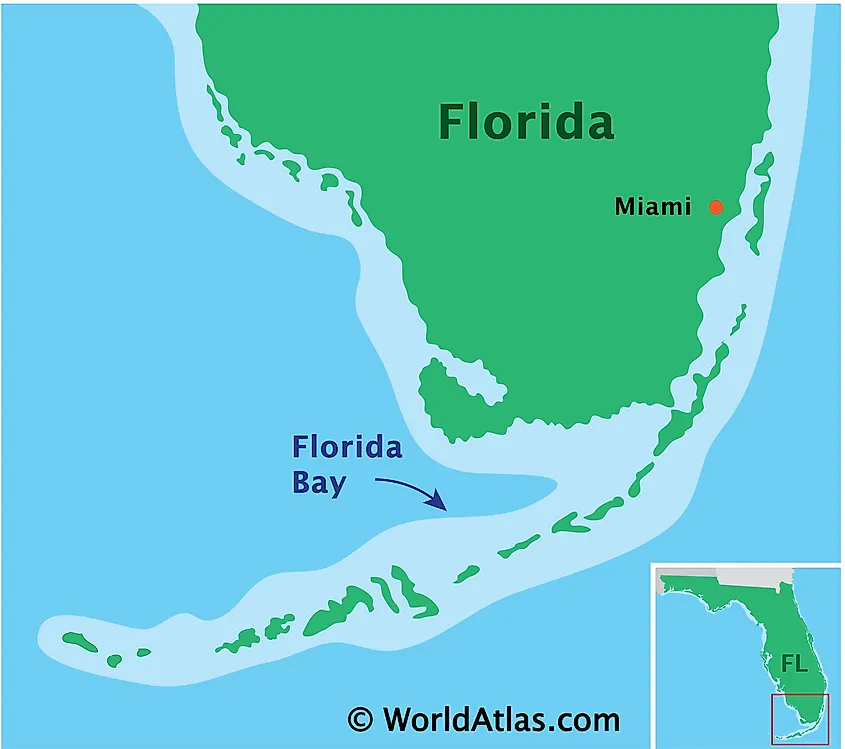
Florida Bay seagrasses are crucial to the economics and ecology of the southern Gulf of Mexico, supplying food and shelter to a diverse range of fish and invertebrates, including economically important pink shrimp, stone crab, and spiny lobster. In addition to this, several wading birds and many endangered species like bald eagles, manatees, American crocodiles, and sea turtles rely on the bay's seagrass ecosystems to some extent.
Everglades National Park
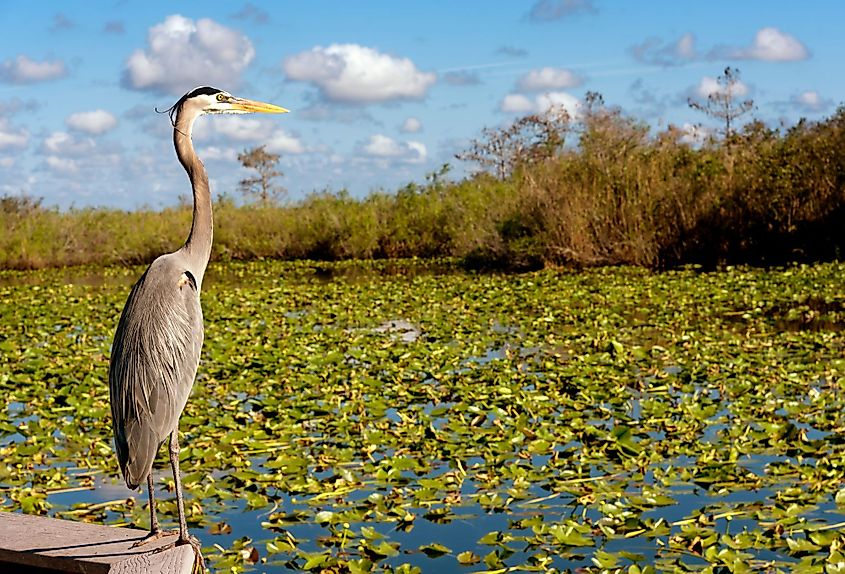
Located in the southern part of Florida, the Everglades National Park covers an area of 6,106.6 sq. km and protects about 20% of the initial Florida Everglades. The park has the most tropical wilderness in the United States, as well as the most wilderness of any sort east of the Mississippi River. It is a crucial home for several rare and endangered animals, including the manatee and the American crocodile. After Death Valley and Yellowstone, Everglades is the third-largest national park in the contiguous United States. The Everglades and Dry Tortugas National Park were declared a Biosphere Reserve in 1976 by UNESCO. In the later years, the Everglades National Park was declared a World Heritage Site and a Ramsar Wetland.
Threats To Florida Bay
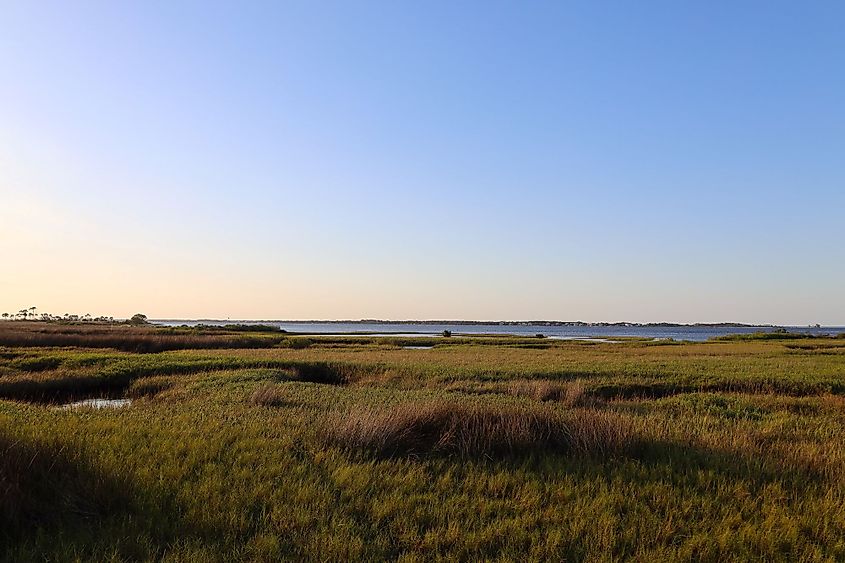
Freshwater flow from the Everglades has been drastically curtailed, resulting in greater salt levels. The degradation of Florida Bay's biological communities has been caused by a drop in water quality due to changes in and diversion of water flow within the Everglades, which reduces the quantity of freshwater flow into the Bay. Salinity levels have risen to the point that some seagrass beds have perished. Seagrass-associated organism populations have also dropped, affecting animals further up the food chain. Rainwater runoff carrying agricultural fertilizers carries high amounts of nitrogen and phosphorus into the estuary. While these fertilizers are utilized in agricultural fields, they induce algal blooms in aquatic systems. When the algal population increases quickly, oxygen from the water is sucked up, lowering the quantity accessible to other marine species. Algae blooms also obstruct a large portion of the sunlight required by seagrasses to perform photosynthesis. Mercury is also a pollutant of concern in south Florida's waterways, particularly the Everglades and Florida Bay. Very low amounts of mercury, originating from agricultural fungicides utilized by farms north of the Everglades as well as atmospheric sources, can have a significant influence on aquatic environments.
Threatened And Endangered Species In Florida Bay
American Alligator
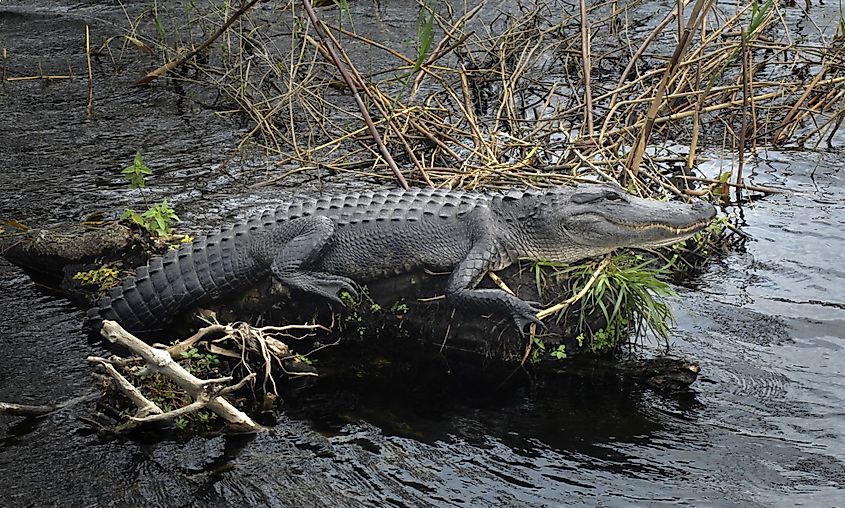
The American crocodile has a pointed snout and a grayish-green color, but the American alligator has a rounded snout and is black in color. Because of its resemblance to the American crocodile, the American alligator is considered an endangered species.
Sea Turtles
The Atlantic ridley sea turtle and the hawksbill sea turtle are two of the four sea turtles found in Florida Bay. The most prevalent sea turtles are the endangered green sea turtle and the loggerhead sea turtle.
Manatee
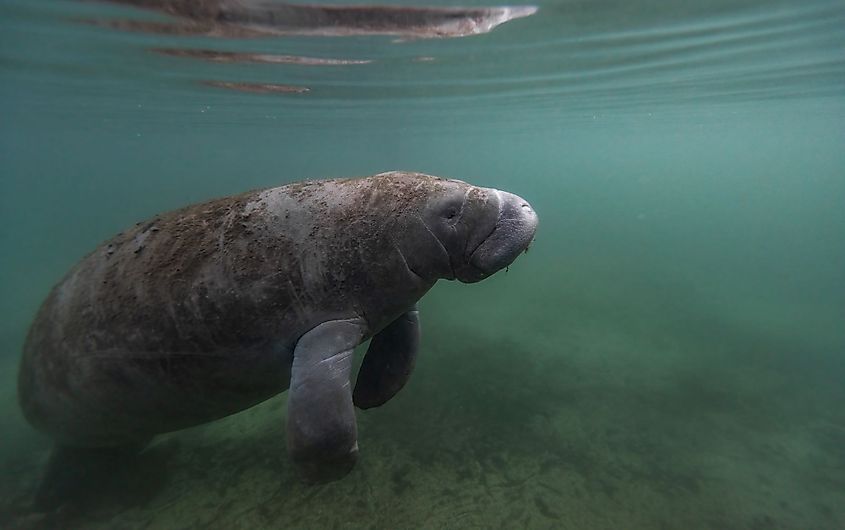
The manatee is a huge, slow-moving, plant-eating aquatic animal that is federally listed as endangered. Its distribution is mainly governed by water temperature since manatees cannot survive in water below 63 °F for lengthy periods. During the winter months in Florida, manatees frequently move into warm spring-fed rivers or near the heated discharges of power plants. Manatees travel out into shallow fresh, brackish, and seawater habitats when the offshore seas warm in late spring and summer.
Wood Stork
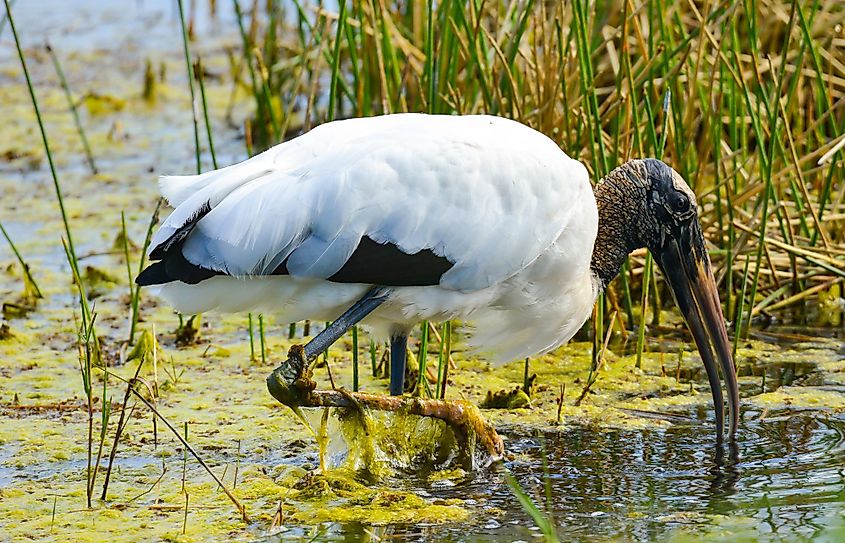
The endangered wood stork lives in Florida Bay's mangrove swamps and estuaries. This species' decline is primarily due to the lack of feeding habitat caused by man's manipulation of wetlands.











